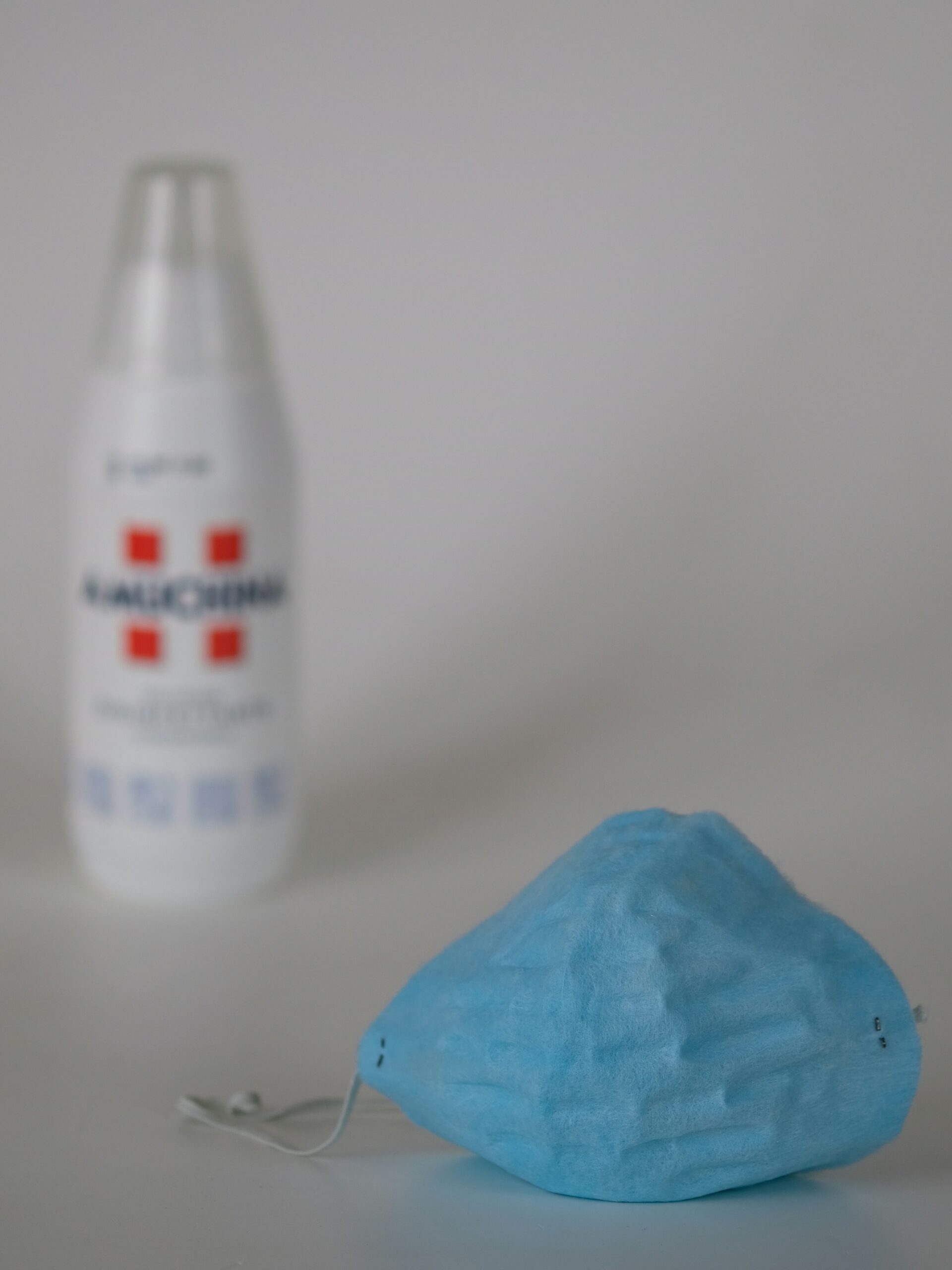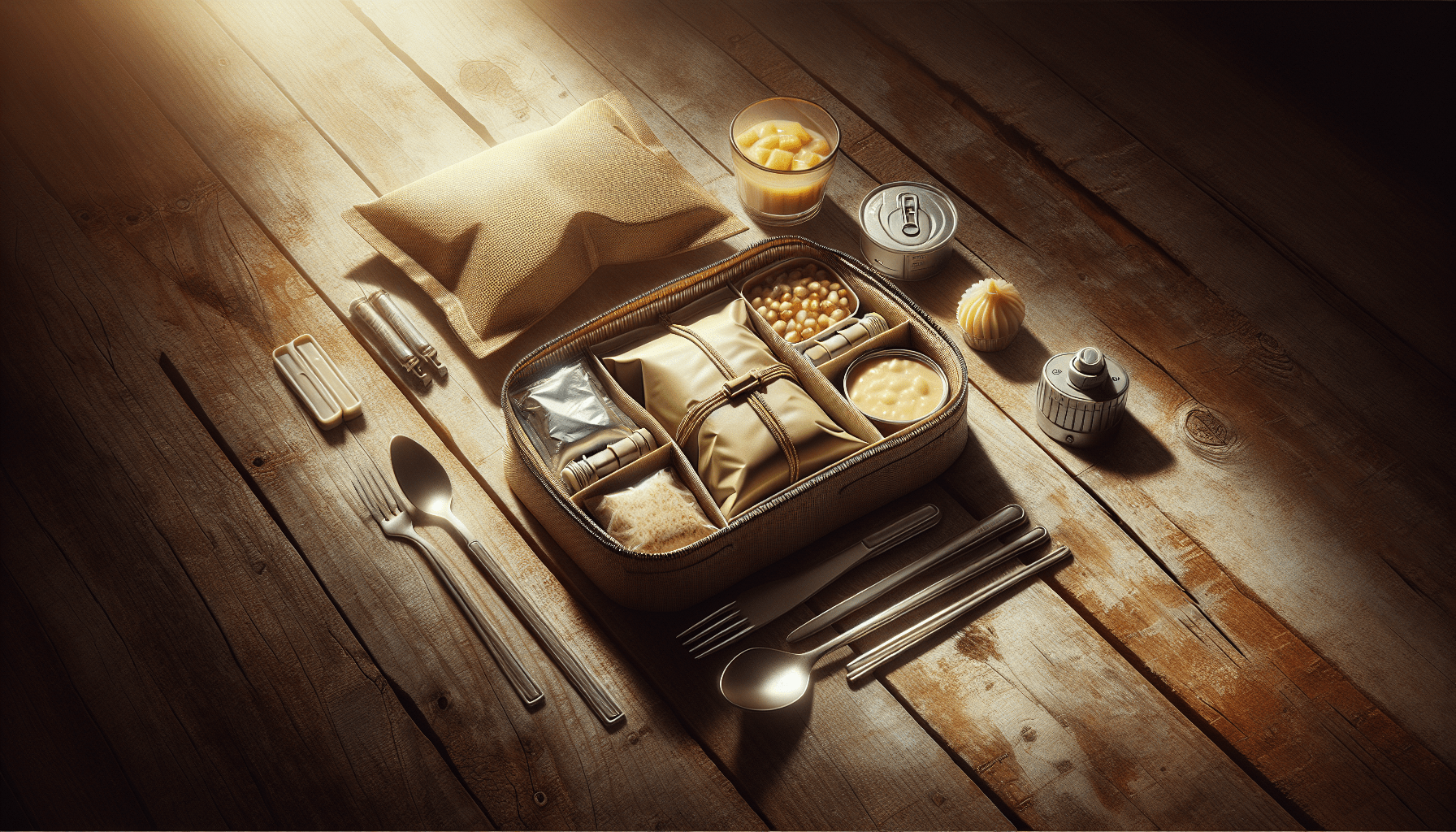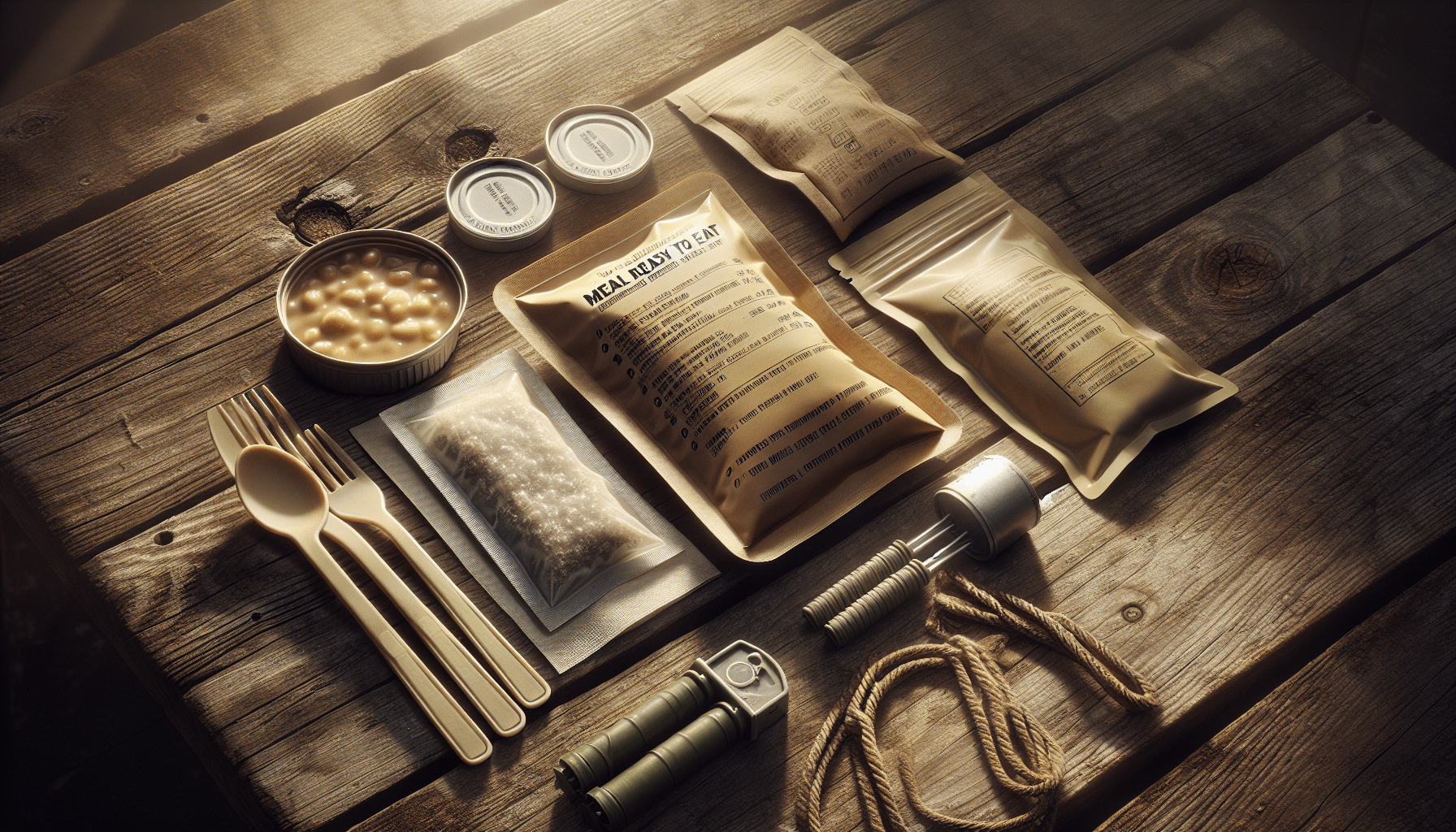Have you ever thought about what would happen if you wake up one day to find that you can’t easily access fresh food anymore? Disasters, whether natural or man-made, can catch us off guard. In such situations, having a reliable emergency food supply is crucial. One option you might consider is Meals Ready to Eat (MREs). But here’s the big question: can you rely solely on MREs for your emergency food supply?

Understanding MREs: What Are They?
MREs are self-contained, individual field rations in lightweight packaging, originally developed by the military for situations where food services are not available. Each meal provides a balanced mix of calories, nutrients, and flavors, ensuring that essential nutritional needs are met. They’re designed to be portable and have a long shelf life, which makes them appealing for emergency preparations.
What’s Inside an MRE?
MREs contain various components to make sure your meal is well-rounded. Typically, an MRE includes an entrée, side dish, dessert or snack, crackers or bread, spread (like peanut butter or jelly), a beverage mix, and a flameless ration heater for warming the meal. The packaging is specifically designed to be durable and waterproof, making it a resilient food option.
| Component | Common Items |
|---|---|
| Entrée | Beef stew, chicken with noodles, pasta dishes |
| Side Dish | Rice, mashed potatoes, beans |
| Dessert/Snack | Cookies, brownies, pound cake |
| Beverage Mix | Coffee, cocoa, flavored drink powder |
| Bread/Cracker | Crackers, biscuits |
| Spread | Peanut butter, cheese spread, jam |
The Nutritional Value of MREs
MREs are designed to offer sufficient calories and a balanced nutrient profile to support physical activities associated with military operations. Typically, each MRE provides about 1,200 to 1,500 calories, aimed at sustaining the energy levels of an averagely active adult. They also contain proteins, fats, carbohydrates, vitamins, and minerals, although the reliance on processed components might mean some trade-offs in nutritional quality.
Advantages of Relying on MREs
There are several benefits to making MREs a part of, or the sole component of, your emergency food supply. It’s important to weigh these advantages against the possible downsides to see if they suit your needs.
Longevity and Shelf Life
One of the biggest selling points of MREs is their long shelf life. Typically lasting anywhere from 3 to 5 years—and sometimes longer if stored in optimal conditions—MREs can outlast many conventional food storage options. This makes them an excellent option for those looking to stockpile emergency food without the need for constant rotation.
Convenience and Versatility
Because no cooking is required to consume an MRE (thanks to their built-in heaters), they’re a great option when utilities like electricity or gas are not available. They’re easy to store, transport, and consume, which can be a significant advantage during an emergency evacuation or while camping.
Comprehensive Package
Beneath its sturdy package, each MRE offers a full meal experience. Unlike merely stocking non-perishable food items like canned goods or dried foods, MREs provide a range of meal components to fend off monotony and keep morale high during tough times.

Potential Downsides of Solely Using MREs
While there’s much appeal in relying solely on MREs, it’s crucial to also consider the possible downsides.
Cost Considerations
One primary issue is cost. MREs can be relatively expensive compared to other long-term food storage options like rice, beans, or canned goods. Depending on where you buy them, the cost could add up significantly if you’re planning for an extensive emergency period.
Storage and Preservation Challenges
While MREs have a lengthy shelf life, climate control is vital. High temperatures can deteriorate their quality and reduce shelf life substantially. For urban dwellers without adequate storage space or climate control solutions, this might pose challenges.
Dietary Restrictions and Palate Fatigue
Those with dietary restrictions or preferences might find MREs limiting. Although there are vegetarian and some specialized options, choices are still limited. Coupled with the potential for palate fatigue from eating processed meals continuously, this may impact morale and nutrition over a long period.

Alternative and Complementary Food Supply Options
To ensure a robust and satisfactory emergency food supply, it might be worth considering complementing MREs with other options.
Freeze-Dried Foods
Freeze-dried foods offer flexibility and an extended shelf life comparable to MREs. They are not as heavy and often retain more of the food’s original flavor compared to MREs. They might require water to prepare but are a good multi-year supply choice.
Canned Goods and Staple Pantry Items
Traditional canned goods like vegetables, meats, and soups, as well as staple dry foods like rice, lentils, and pasta, can balance out your food supply. They often last years and are generally more affordable, albeit heavier and bulky for transport.
DIY Preservation and Dehydration
Some opt to prepare and preserve their own food through canning or dehydration. This option allows you to cater specifically to your dietary preferences, though it requires more effort and resources. However, it’s a rewarding and sustainable approach, especially for those with home-grown produce.

Preparing an Efficient and Balanced Emergency Food Supply Strategy
When preparing for emergencies, variety and balance are key. Here’s how you could strategically include MREs in your supply.
Rotation and Stock Management
Mix MREs with other food types to have a full rotation system in place, thus ensuring that nothing spoils before it’s consumed. This can also help maintain nutritional variety and prevent experience burnout on any one type of food.
Calculating Daily Caloric Needs
It’s important to calculate how much you might need based on the number of people in your household, their activity level, and how long you plan to be self-sufficient. Remember, during stressful times, people tend to need more energy, so account for higher caloric needs.
Specialized Dietary Needs and Preferences
Consider the unique dietary needs and preferences of your household. If there are allergies, medical dietary restrictions, or unique preferences, ensure that your food inventory accommodates them. This can prevent unwanted health effects and ensure everyone has access to what they need to stay nourished.

Final Verdict: Can You Rely Solely On MREs?
So, your essential question: can you rely solely on MREs for your emergency food supply? The answer depends on your situation and needs. MREs offer clear benefits in terms of durability, convenience, and comprehensive packaging. However, for a complete and reassuring preparedness experience, consider diversifying your emergency food supply. Combining MREs with other food sources ensures you can meet dietary needs and preferences, mitigate potential costs, and create sustainable food security for any duration.
As you prepare for emergencies, remember it’s not just about having enough food, but having the right food. Balance, variety, and consideration for everyone’s needs will make any unforeseen circumstances more manageable and less stressful. Keep these insights in mind, and you will be ready with a well-rounded emergency preparedness plan.

